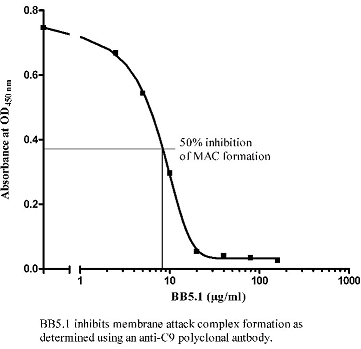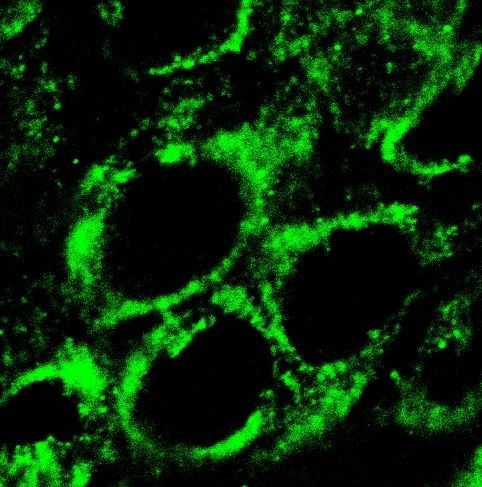C5, Mouse, mAb BB5.1, immuno assay antibody
Frozen sections, Functional studies, Immuno assays, Immuno fluorescence, Immuno precipitation, Paraffin sections
Mouse
Rat - Yes
IgG1
Monoclonal antibody
Purified C5
Complement C5, Hemolytic complement</br> Gene name: C5
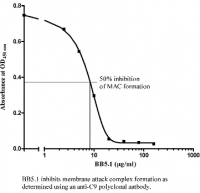
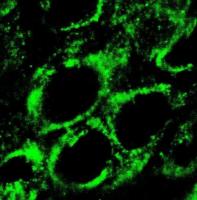
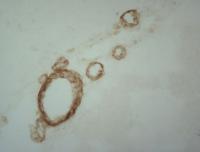
The monoclonal antibody BB5.1 binds the fifth component of mouse complement (C5). The complement system is a group of plasma and cell membrane proteins that play a key role in the immune system. All three pathways (classical, alternative and lectin) lead to the cleavage of C3 and eventually the formation of the cytolytic membrane attack complex C5b-9. If the activation cascade is allowed to proceed beyond the cleaving of C3 into C3a and C3b, an additional C3b molecule binds to the C3 convertases. This generates the C5 convertase (C3bBbC3b for the alternative pathway and C4bC2bC3b for the classical and lectin pathways). C5 convertase cleaves C5, releases the potent anaphylactic peptide C5a and generates C5b. C5b can initiate the terminal pathway , which recruits the components C6, C7, C8 and C9 to the surface of the target and inserts the C9 complex as a pore (termed the terminal complement complex) into the membrane. C5a is the most potent anaphylatoxin and a powerful chemotaxin for neutrophils and monocytes, with the ability to promote margination, extravasation, and activation of these cells. Thus, blocking C5 may be required for optimal inhibition of the inflammatory response. At the same time, inhibition of the complement cascade at C5 does not impair the generation of C3b through the classical and alternative pathways, preserving C3b-mediated opsonization of pathogenic microorganisms as well as opsonization and solubilization of immune complexes. C5 is synthesised in the liver as a single polypeptide chain and is present in serum in a concentration of 50-80 µm/ml. Before secretion the molecule is glycosylated and secreted into plasma as a 190 kDa glycoprotein consisting of a disulphide linked alpha-chain (111 kDa) and beta-chain (75 kDa). Monoclonal antibody BB5.1 has been shown to precipitate the two chains of C5 from normal mouse serum and inhibited C5-dependent hemolysis in a functional complement test. Furthermore, BB5.1 administration completely inhibits terminal complement activity in murine models for antibody-mediated rejection (AMR) during heart and kidney transplantation. In another mouse model, both pre-treatment as well as intervention with monoclonal antibody BB5.1 attenuates disease development during anti-MPO IgG-induced glomerulonephritis. Blockage of C5 activation by BB5.1 protects against renal ischemia-reperfusion injury by inhibition of late apoptosis and inflammation. In Lupus disease, combination therapy of anti-IL-10/anti-C5 (BB5.1) can both prevent and reduce the effect of the humoral immune response.
2 - 8°C






